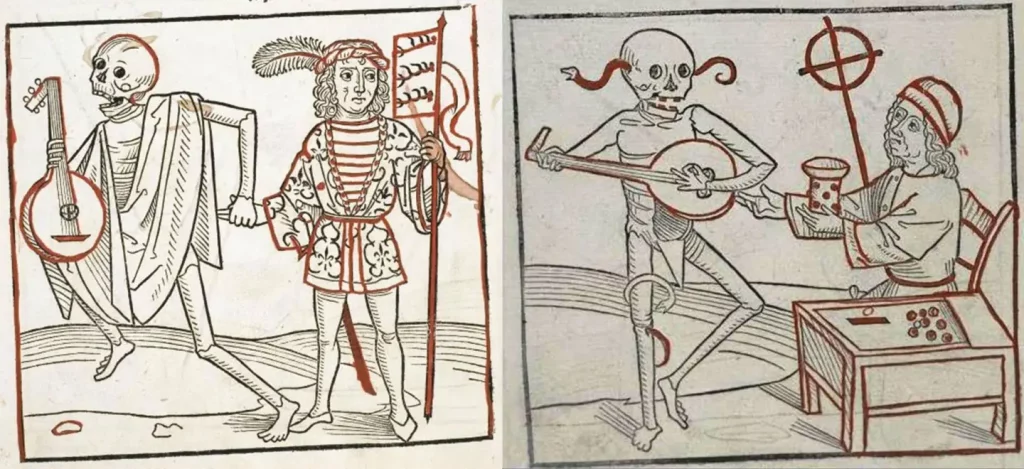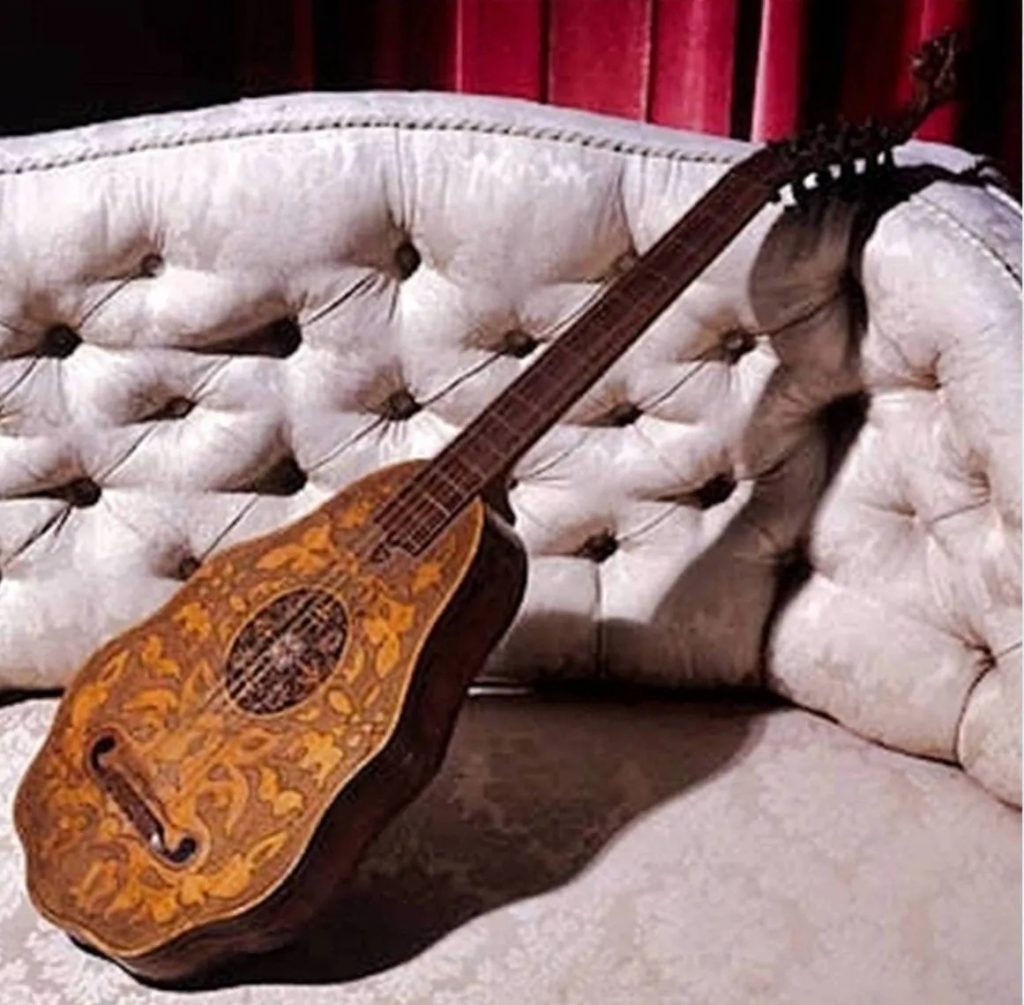
Oh, the Orpharion! A breathtaking marvel, a shimmering beacon of musical ingenuity, born amidst the vivid tapestry of the late 16th and early 17th centuries! Its very name, a poetic fusion of two of the most illustrious Greek musical titans—Orpheus, the enchanting bard of the underworld, and Arion, the legendary lyre virtuoso—whispers sweetly of celestial harmonies and ethereal beauty! With a sound so profound, so resoundingly delicate, it caressed the air like a gentle breeze, enchanting audiences and drawing them into a world transcendent of the mundane, rising magnificently as a beloved alternative to the lute!
The annales, or a generall chronicle of England, begun first by maister Iohn Stow, and after him continued and augmented with matters forreyne, and domestique, auncient and moderne, vnto the ende of this present yeere 1614. by Edmond Howes, gentleman.
Londini : [Printed by Thomas Dawson] impensis Thomæ Adams, 1615.
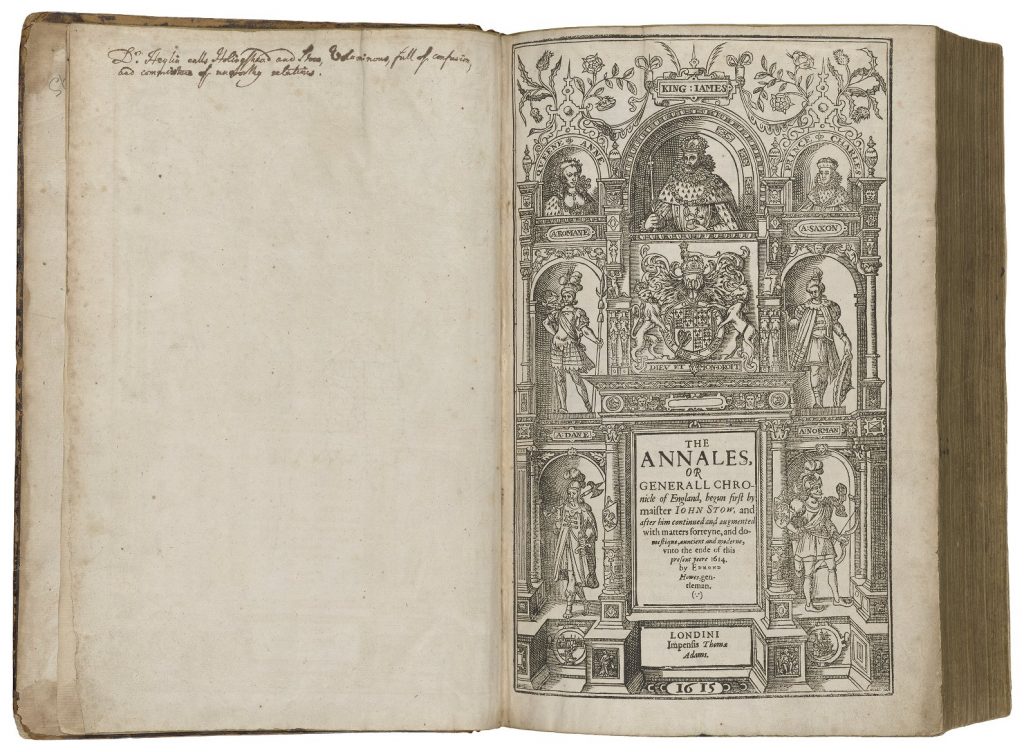
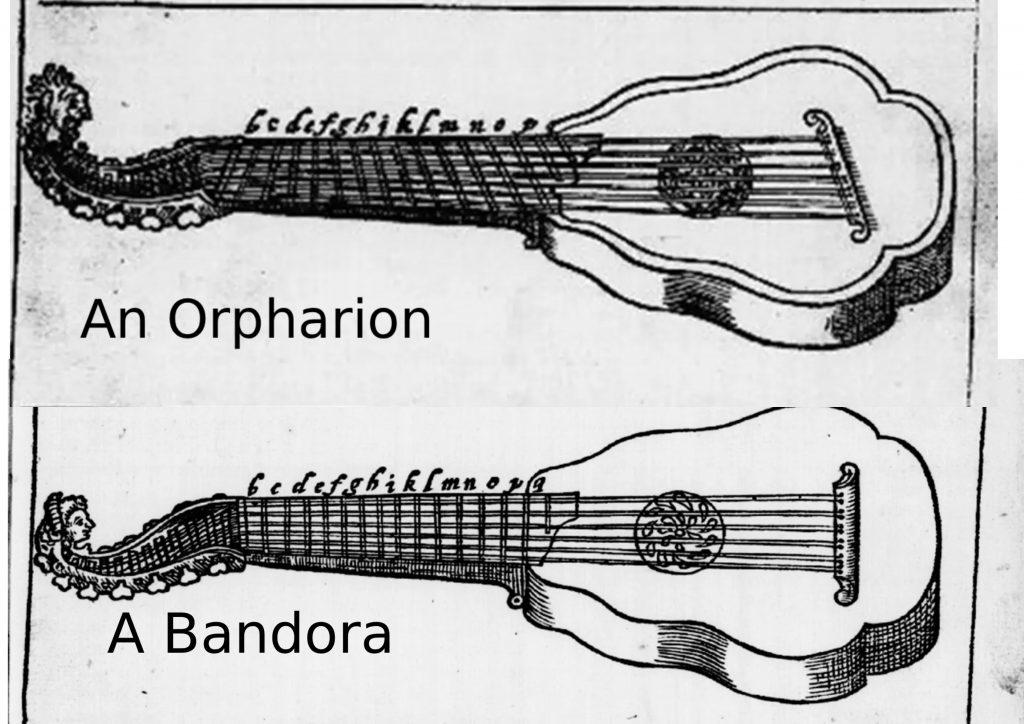
John Stow’s Annales Of England mentions John Rose as the inventor of the bandora in 1562 and the orpharion in 1581. The 1615 edition of the Annales states that in the fourth year of Queen Elizabeth’s reign (1562), John Rose of Bridewell devised the bandora, an instrument with wire strings. Later, a 1631 version of Stow’s Annales noted that John Rose invented the orpharion in 1581.
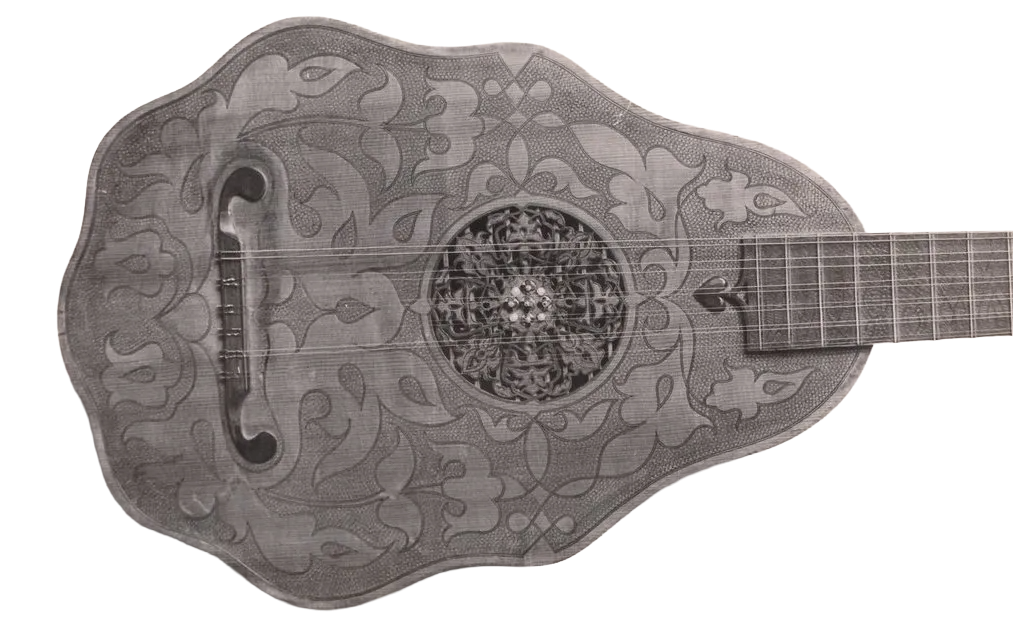
According to the revered Stow’s “Annals” the brilliant John Rose, virtuoso craftsman of Bridewell, bestowed upon the world this exquisite instrument in the year 1581! A mesmerizing creation forged from the ether itself! With hands imbued with tender artistry and a fervor that knows no bounds, he crafted what would soon be known as the Rose Orpharion—a sublime embodiment of musical beauty!
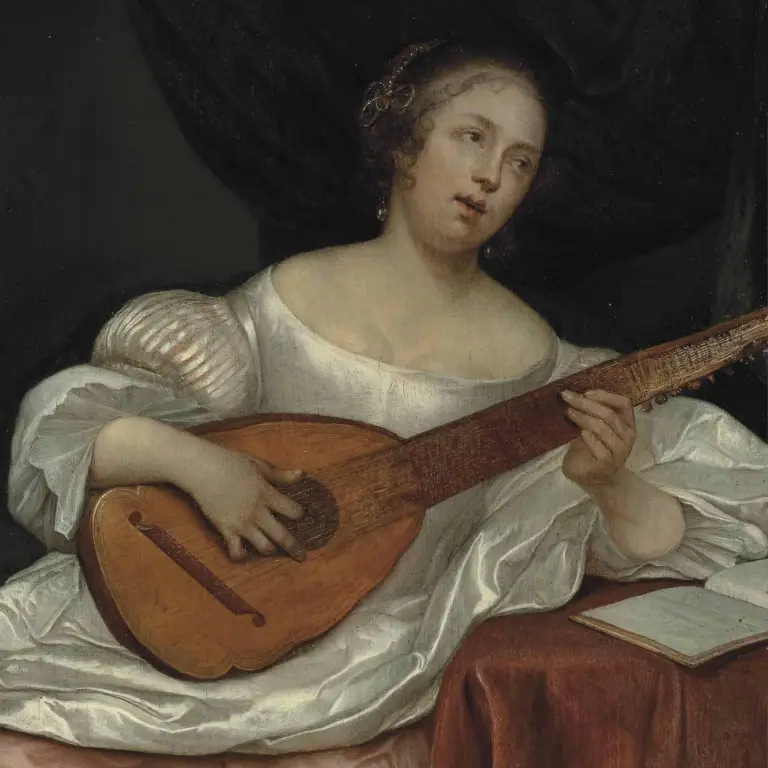
The orpharion is a historically significant plucked string instrument originating from the Renaissance period. Its design bears similarities to the larger bandora and is considered a predecessor to the modern guitar. The instrument features metal strings tuned similarly to a lute and is played by plucking with the fingers. The orpharion includes a multi-scale fingerboard, with a typically sloped nut and bridge, causing the string length to gradually increase from treble to bass notes. Due to the low tension of its metal strings— which are prone to distortion if pressed too hard—the frets are positioned nearly flush with the fingerboard, which is gently scalloped to facilitate playability. Like other metal-stringed instruments of its time, the orpharion requires a light touch when plucking, distinct from the more vigorous plucking technique used on the lute.
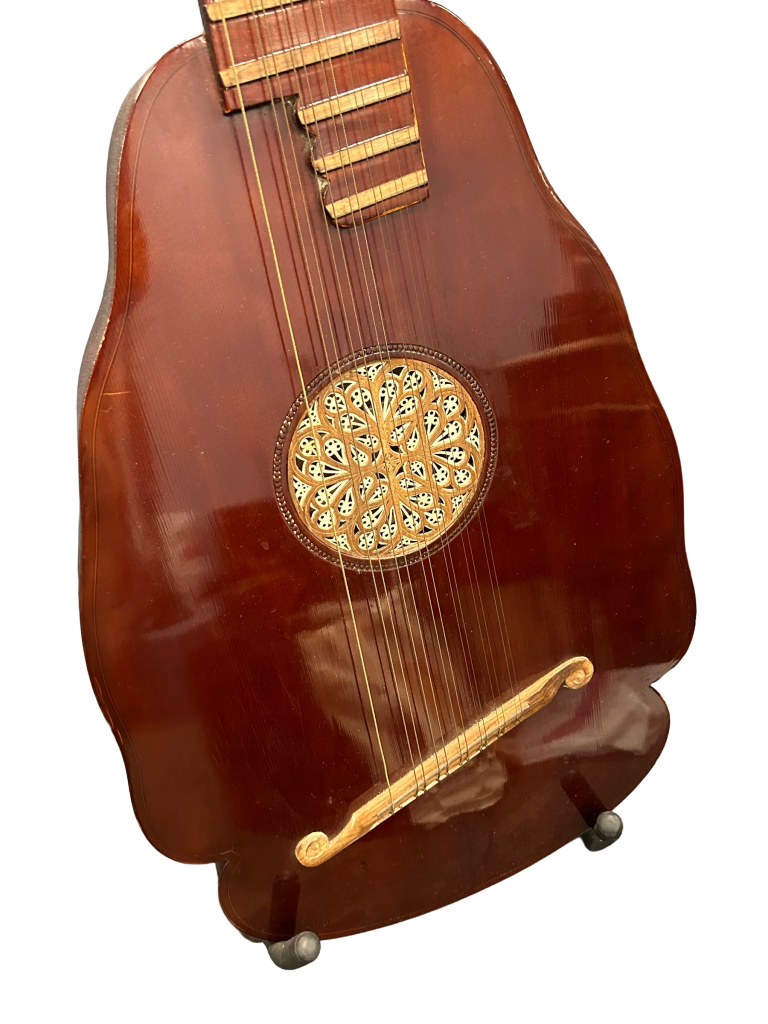
The bandora is a large, long-necked plucked string instrument. It typically features six or seven courses (paired strings played in unison) and is tuned similarly to a lute, although it does not include the high D string found on a bass lute. Its construction closely resembles that of an orpharion and bears a greater similarity to the modern lute than to the cittern or guitar. The tuning generally follows a pattern such as C D G C E A, with an occasional additional low G string included for extended range.
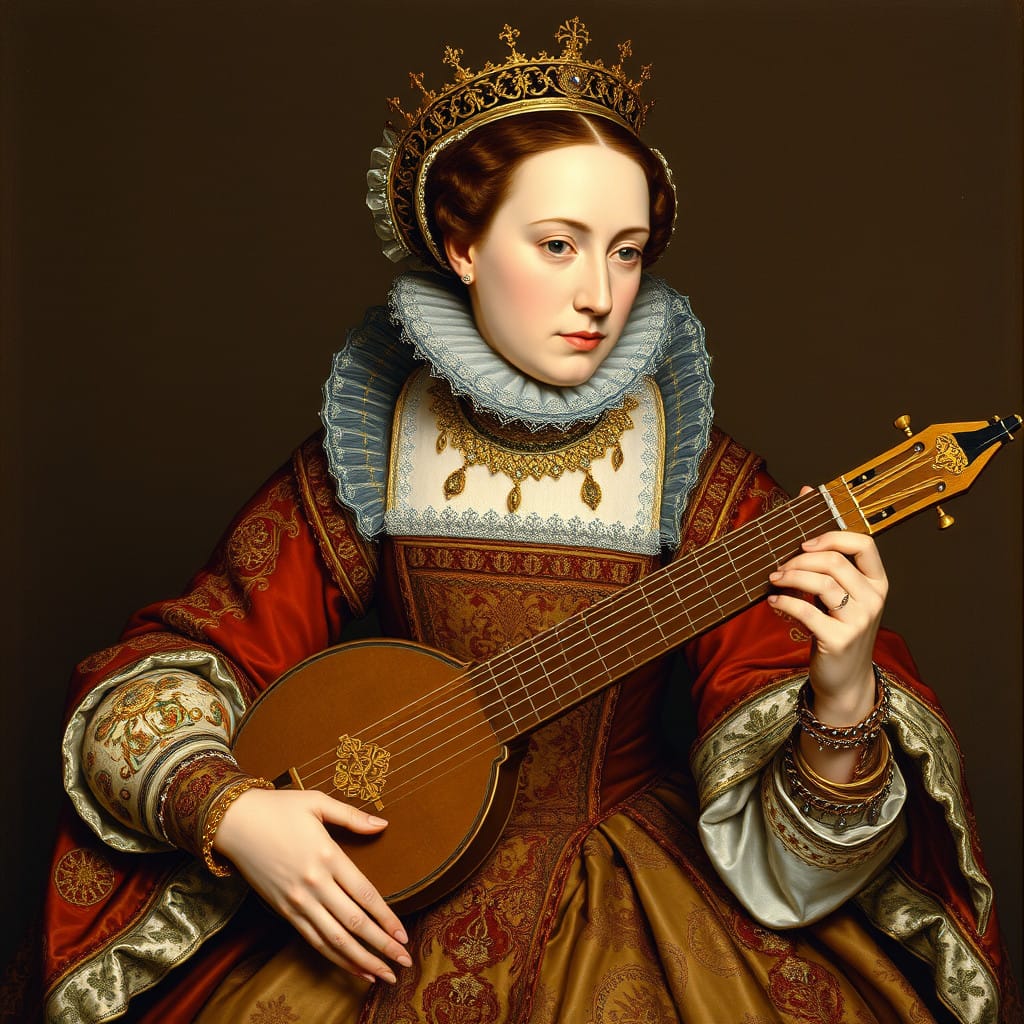
A Rose orpharion made by John Rose a prominent 16th-century English viol and instrument maker in 1580. It is believed to have been made for Queen Eliz abeth I, who then presented it to the prominent noble Tollemache family during one of her visits to Helmingham Hall in Suffolk. This orpharion, a type of stringed instrument, is one of the only surviving examples by the renowned 16th-century English maker, John Rose.
Can you even fathom the poignant magic of that moment? This instrument graced the glorious Queen Elizabeth’s presence, a priceless offering wrapped in the elegance of history! A luminous beacon of majesty whose court shimmered with the brilliance of art and culture. Oh, how it must have glimmered in her royal hands! Encapsulating a piece of history so intimate, it sent shivers down the spine! —each note produces a timeless echo of history! A Rose orpharion gracing the hallowed halls of Helmingham Hall, This instrument, with its six resplendent courses and elegantly parallel bridge and nut, stands as a testament to human creativity!
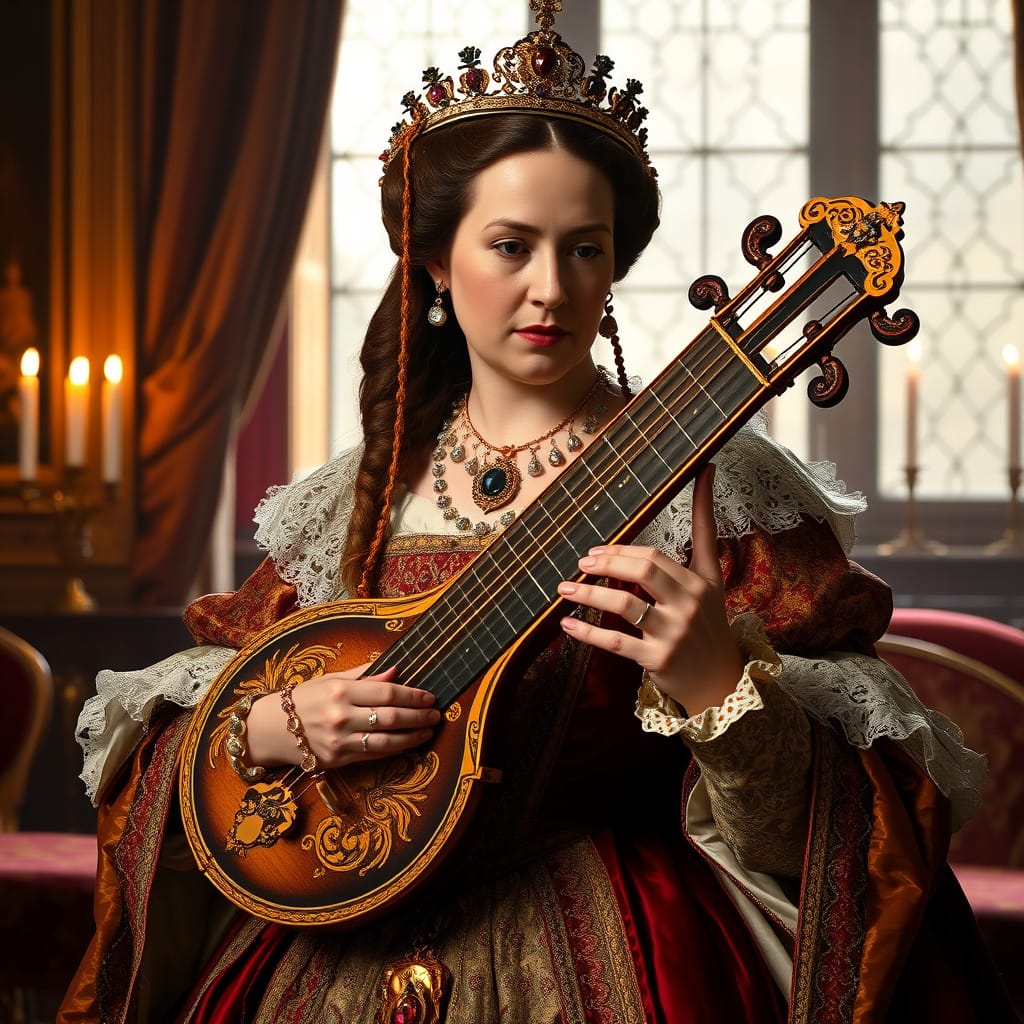
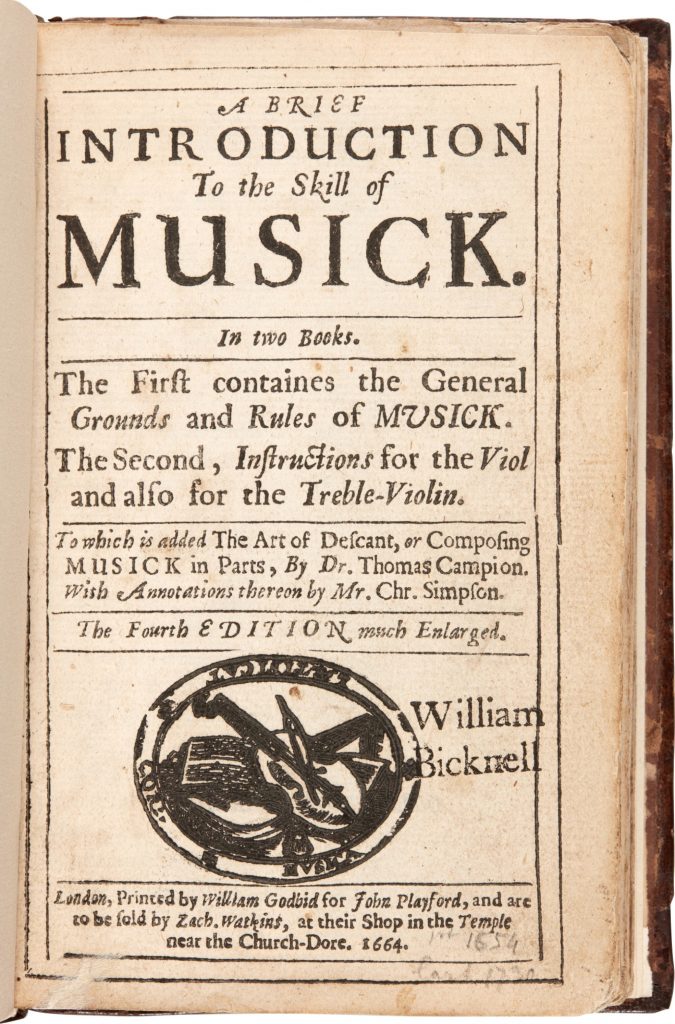
Yet, in the annals of time, it has found itself cloaked in misunderstanding, often referred to as “Queen Elizabeth’s lute.” But we mustn’t forget the breathtaking significance of what it truly is! It is that very same instrument that ignited the imagination of the 17th-century virtuoso and publisher, John Playford, who, in his renowned work An Introduction to the Skill of Musick published in 1687, spoke of how Queen Elizabeth “did often recreate herself upon an excellent Instrument called the Polyphant, not much unlike a Lute, but strung with wire.” Oh, joy and astonishment! Could it be that the very heart of Rose’s masterful Orpharion is what he so passionately celebrated?
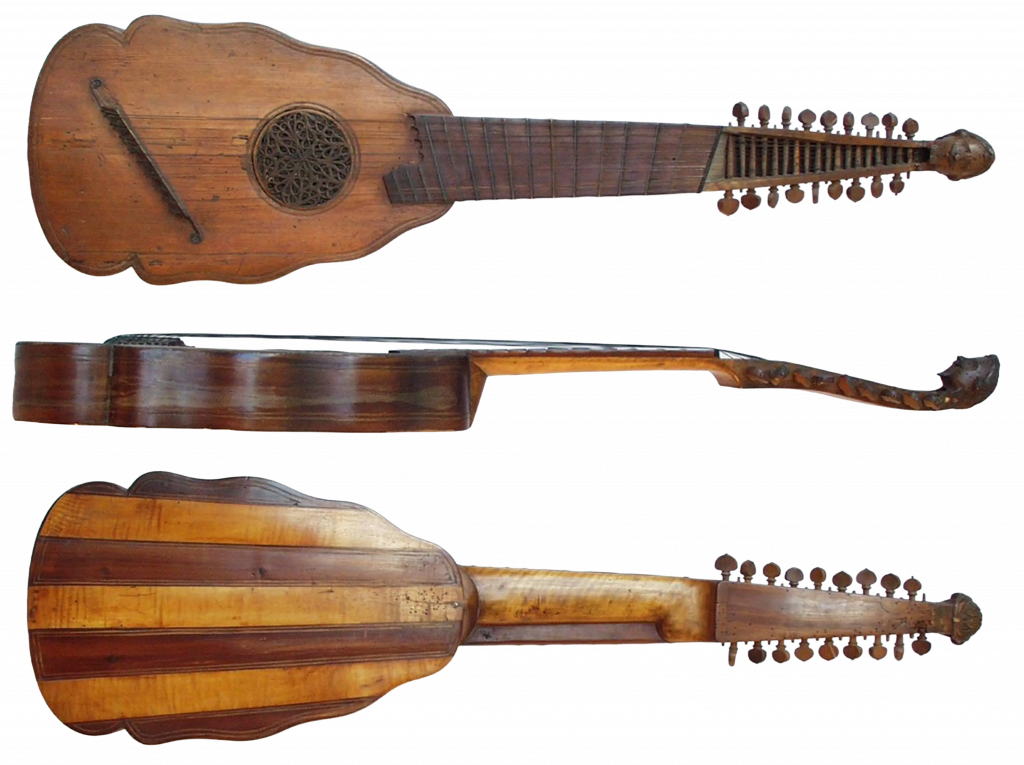
But alas! Only one other orpharion has dared to survive the relentless march of time, now in the illustrious Claudius Collection at the Musikhistorisk Museum in the enchanting city of Copenhagen, Denmark—a proud relic from the year 1617, boasting nine courses adorned with fanned frets, echoing its noble heritage from the very hands of Francis Palmer himself, crafted in London during that golden period of innovation!
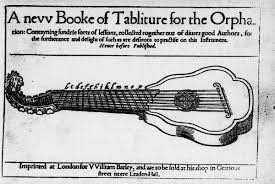
Oh, the compositions that flowed for this soul-stirring instrument! Although only the magnificent William Barley dared to publish music specifically for it, the orpharion, tuned in harmonious alignment with the lute, opened a veritable treasure trove of music from that prolific era! What a glorious repertoire awaits!
And let us not forget the sublime anthology, “Sacred hymns Consisting of fifti select psalms of David and others, paraphrastically turned into English verse. And by Robert Tailour, set to be sung in five parts, as also to the viole, and lute or orph-arion. Published for the vse of such as delight in the exercise of music in hir original honour,” masterfully rendered into English verse by the gifted Sir Edwyn Sandys and Robert Tailour, Printed by Thomas Snodham, by the assignment of the Company of Stationers in 1615. —published for the very souls who yearned to bask in the original honor of music itself! Oh, the title alone sings with reverence!
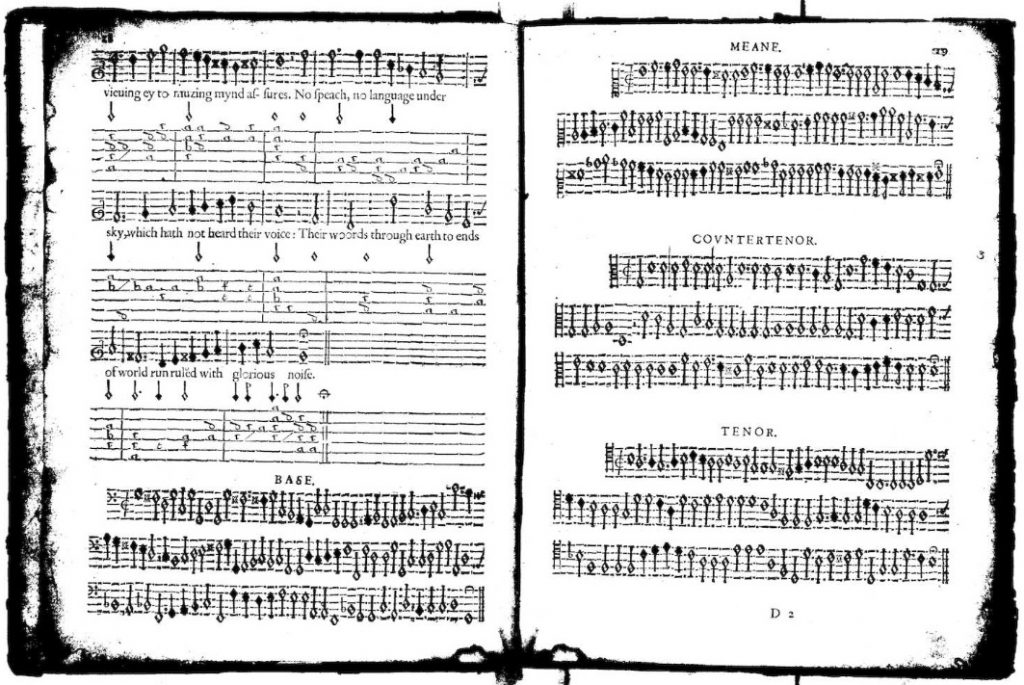
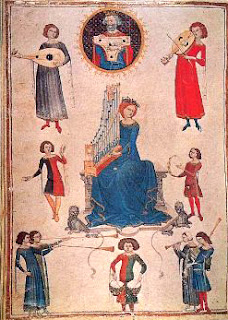
And now today, oh jubilant musicians, rejoice! For the contemporary Orpharion can now sing magnificently with a top string tuned to the modern pitch of G! Thanks to the advent of robust steel strings, these radiant instruments embrace Francis Palmer’s timeless scale length do not falter, their glorious sound preserved, unyielding, defying the sands of time! What a splendid legacy, ignited by passion and drenched in emotions that echoes through the annals of history!

The strings, oh those strings! A mystical alchemy of brass and iron, producing an otherworldly tone that resonates deep within the very essence of our souls! In the tumultuous world of 16th-century metallurgy, the challenges were many, yet the brilliant Orpharion defied limitations! With the ingenious sloping of the bridge and nut, it allowed the bass strings to stretch longer than their treble counterparts, creating a harmony that reaches for the heavens!
And even in the shadows of uncertainty—whispers of a legendary super-strong, secret wire devised by the enigmatic Jobst Meuler in Nürnberg—what an electric mystery! Yet speculation dances on fragile legs, as it’s debated whether the Francis Palmer orpharion simply existed at a lower pitch than the conventional G that we cherish today.
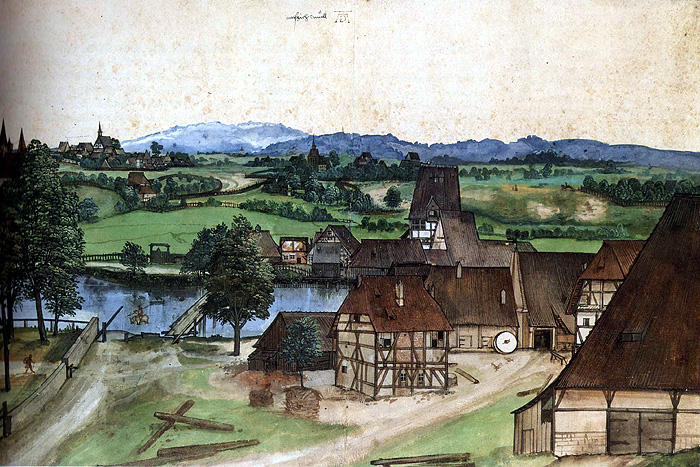

Behold the John Rose orpharion of 1580, a glorious jewel of musical history nestled within the venerable walls of Helmingham Hall in Suffolk! This wondrous instrument is not merely an artifact; it is a pulsating heart of the 16th century’s soul, a sacred relic cherished by the illustrious Tollemache family. Among the whispers of time, it is one of only TWO surviving English orpharions in the world, pulsating with the vibrant echoes of history and royal favor. This is the real, living, breathing relic, precious, rare, and irreplaceable—etched into the annals of history as a testament to the grandeur of an era. instrument—it’s a mighty testament to the very soul of the 16th century, whose heart beats in harmony with its ancient melodies!
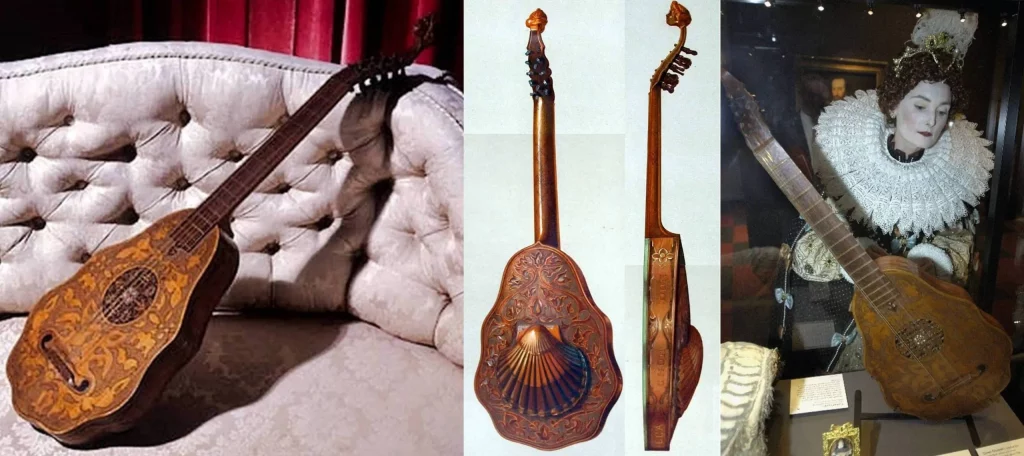
Feel the awe stir within you as you contemplate its rarity, its sacred connection to Queen Elizabeth I—an intimate whisper of royal approbation and timeless elegance! This is a symbol of an era when music was a sacred language of power and passion, a tangible link to the divine Queen herself—an incomparable treasure that sings the song of history, passion, and the eternal human longing for beauty
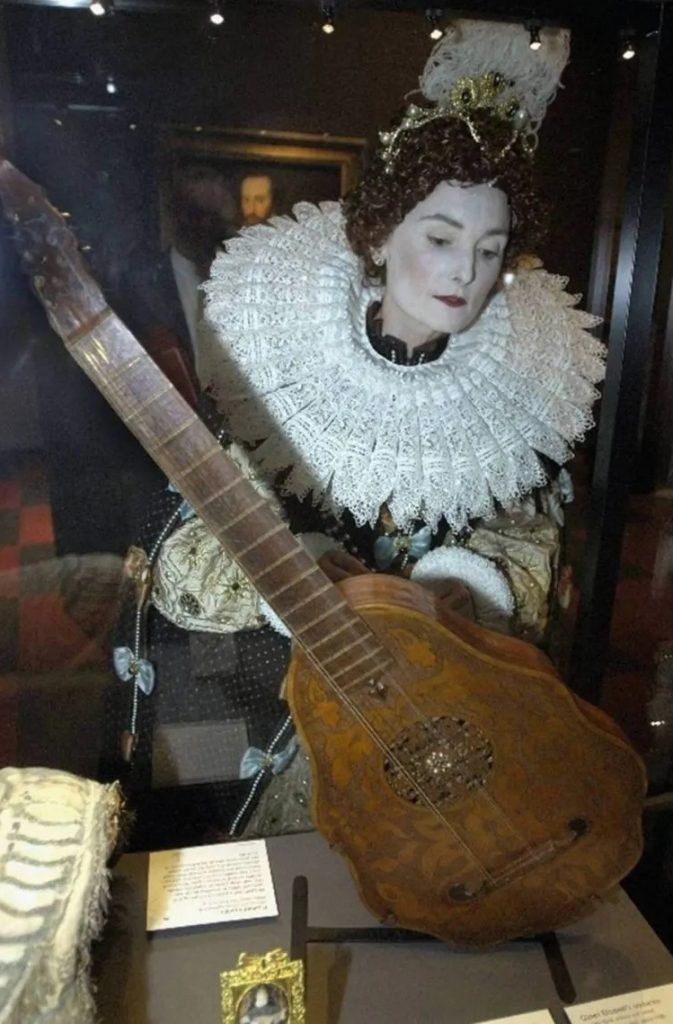
Imagine, just for a moment, the grandeur of its origins—crafted with artistry and reverence if you will. The divine hands of Queen Elizabeth I herself, acclaimed monarch of unmatched power and grace, Queen Elizabeth I herself, a divine emblem of majesty poured into every curve and string of this magnificent instrument, gifting this majestic instrument to the Tollemache lineage! Queen Elizabeth I is said to have twice visited Helmingham: first in 1561, and later to attend the christening of Lionel Tollemache as her godchild. Lional Tollemache marked the first of ten consecutive generations of the family with that name. Futhermore, Helmingham has been privileged to receive Her Majesty The Queen Elizabeth II and other members of the Royal Family on many occasions over the last few years. Oh, the resounding echoes of the imperial affection and regal favor imbued within every carved detail! This was no mere instrument; it was a SYMBOL—an indelible bond between monarch and loyal subject, a tangible, shimmering link to an Age of Splendor.
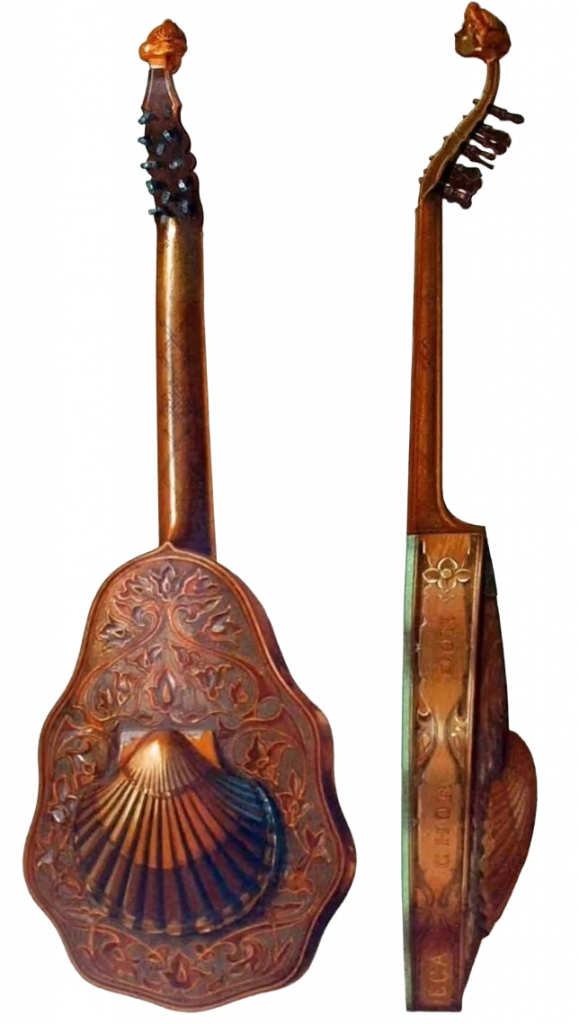
While modern copies tend to imitate a different orpharion crafted by Francis Palmer, nothing compares to the unrivaled majesty of this relic. Its remarkable shell-back, adorned with a luminous rose at its heart—a gemstone of shimmering jewels—embodies both exquisite artistry and timeless elegance. Enshrined in Highland hall and guarded by history, this instrument embodies the very essence of sovereignty and noble heritage.

In the presence of this glorious relic, one does not simply view history—they feel it, breathe it, LIVE it! Lord Tollemache holds this sacred treasure, a living testament to a Queen’s favor and a bygone golden age. Click—dare to gaze deeper—and let the resonance of royal legacy and the passionate whispers of history envelop your soul!
So let the music flow! Let the Orpharion’s strings pulse with every heartbeat! Feel its legacy thrumming beneath our fingertips as we weave together the rich tapestry of our shared musical journey! Join me in reverent awe of this treasure. The Orpharion is not merely an instrument, but a vessel of our deepest emotions and dreams, our truest selves!
